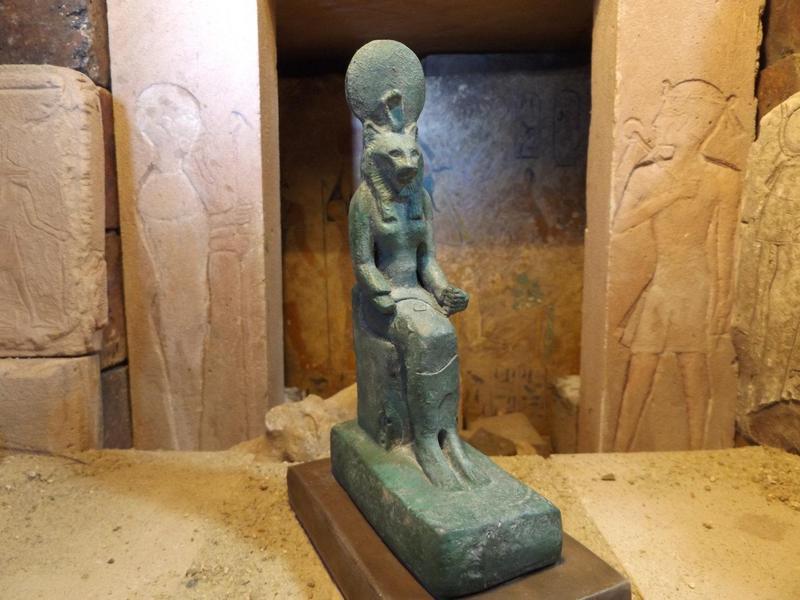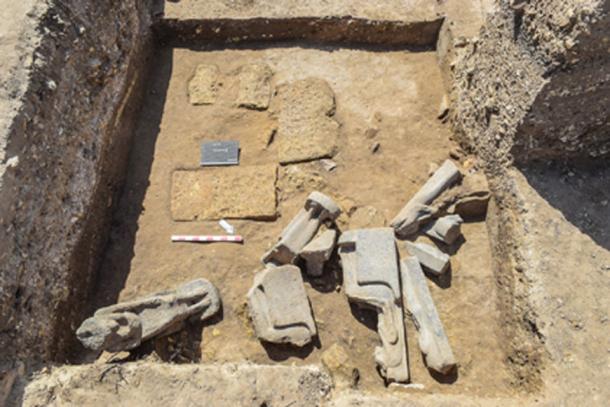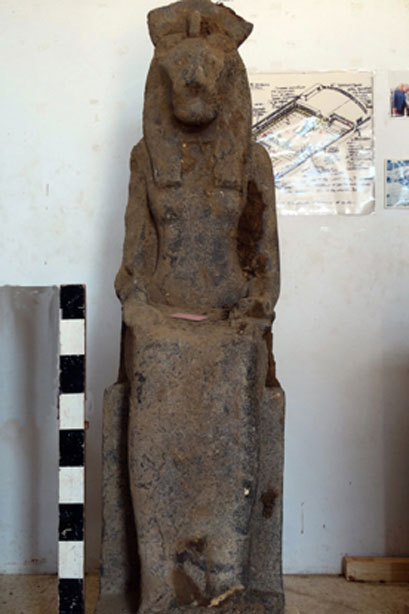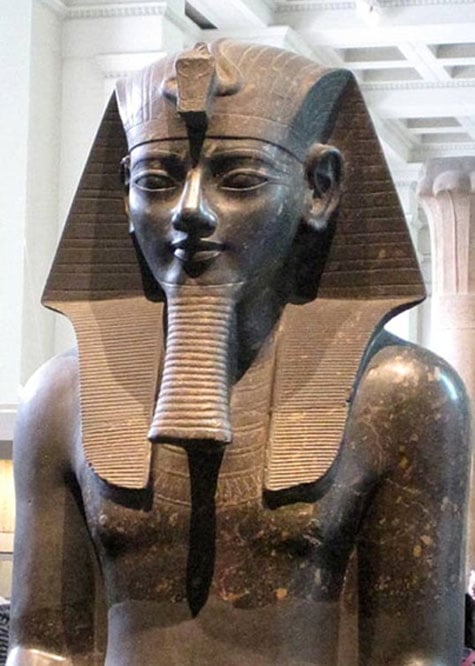Archaeologists find New Statues of Pharaoh Amenhotep III and the Lioness Goddess SekhmetMay 8, 2018

Archaeologists working in Luxor have discovered a magnificent statue of King Amenhotep III of ancient Egypt and many statues and statue parts of the cat goddess Sekhmet supposed to shield him.
The project of excavating the temple by the Colossi of Memnon and Amenhotep III Temple Conservation Project has been underway for several years. Over time, rising Nile waters, pillaging, along with a strong earthquake led to the temple’s ruination. 14 feet tall, 61 cm (2 feet) wide and 110 cm (3.6 feet) deep, according to an article concerning the find in AhramOnline that quoted project director Hourig Sourouzian.
“It is a masterpiece of ancient Egyptian sculpture: extremely well carved and perfectly polished,” AhramOnline quoted Sourouzian as stating. She added that the king’s facial features seem very juvenile, which means maybe the statue was carved in his earliest years as Egypt’s ruler.
The group discovered a similar sculpture of Amenhotep III in 2009. Someday it’ll be returned to stand in Amenhotep’s restored funerary temple at its original place, as will this latest find.
The head of Egypt’s Ministry of Antiquities, Mahmoud Afifi, stated 66 statue parts of Sekhmet have been discovered this archaeological season. In some, the goddess is either standing or seated and holding papyrus scepters or ankhs, the sign of life. The head of the lion goddess is preserved on many of the statues. Others are in various pieces, such as heads, busts, and other parts.
The Sekhmet statues were found in the region between the temple Peristyle Court and the Hypostyle Hall. Archaeologists have been excavating the areas in an effort to come across the wall which separated the court from the hall. The discovery of the statues are anticipated to improve comprehension of how the temple had been laid out.

Some of the statues of Sekhmet since they had been discovered in situ.
The temple had been damaged by a strong earthquake in 27 BC that knocked over the walls and the columns that held up them. The lion-headed goddess figurines had survived extensive quarrying throughout the Ramesside Period, Sourouzian informed AhramOnline. She stated that the figurines are of fantastic interest to researchers. Conservationists wish to place all of the statues of the goddess back into their original positions once the job is complete.
Sekhmet’s title comes from the term sekhem, which signifies might. One of her myths was that she shields the sun god from his enemies. Amenhotep had countless sculptures of Sekhmet created for temples constructed in Thebes during his reign, which lasted about 1386 BC until 1349 BC.

One of the better-preserved statues of Sekhmet, the cat goddess intended to shield Amenhotep III.
His funerary temple in Thebes was known as the “temple for millions of years.” The high variety of Sekhmet statues were supposed to guard the king from evil and protect against disease. The World Monuments Fund has an article about Amenhotep III along with his works that says:
“Amenhotep III is entombed inside the limestone hills of the Theban Necropolis, a sprawling cemetery on the banks of the Nile River opposite modern-day Luxor, where pharaohs and their queens, priests, and royal scribes were buried between the sixteenth and eleventh centuries B.C. Amenhotep III ruled Egypt for nearly four decades, until his death in 1349 B.C. at the age of 50. His reign was marked by prosperity, political stability, and the creation of some of ancient Egypt’s most magnificent complexes. His legacy includes an elaborate mortuary temple intended for rituals and offerings to honor the pharaoh in perpetuity.”

An enormous statue of Amenhotep III at the British Museum.
Unfortunately, the king constructed his funerary temple too near the Nile River, and it had been swamped by river. Pillaging by humans further damaged the sculptures and buildings. The earthquake ruined it even more. Nevertheless, archaeologists are working to salvage what they can and intend to reconstruct and conserve the mortuary temple.
Be the first to post a message!